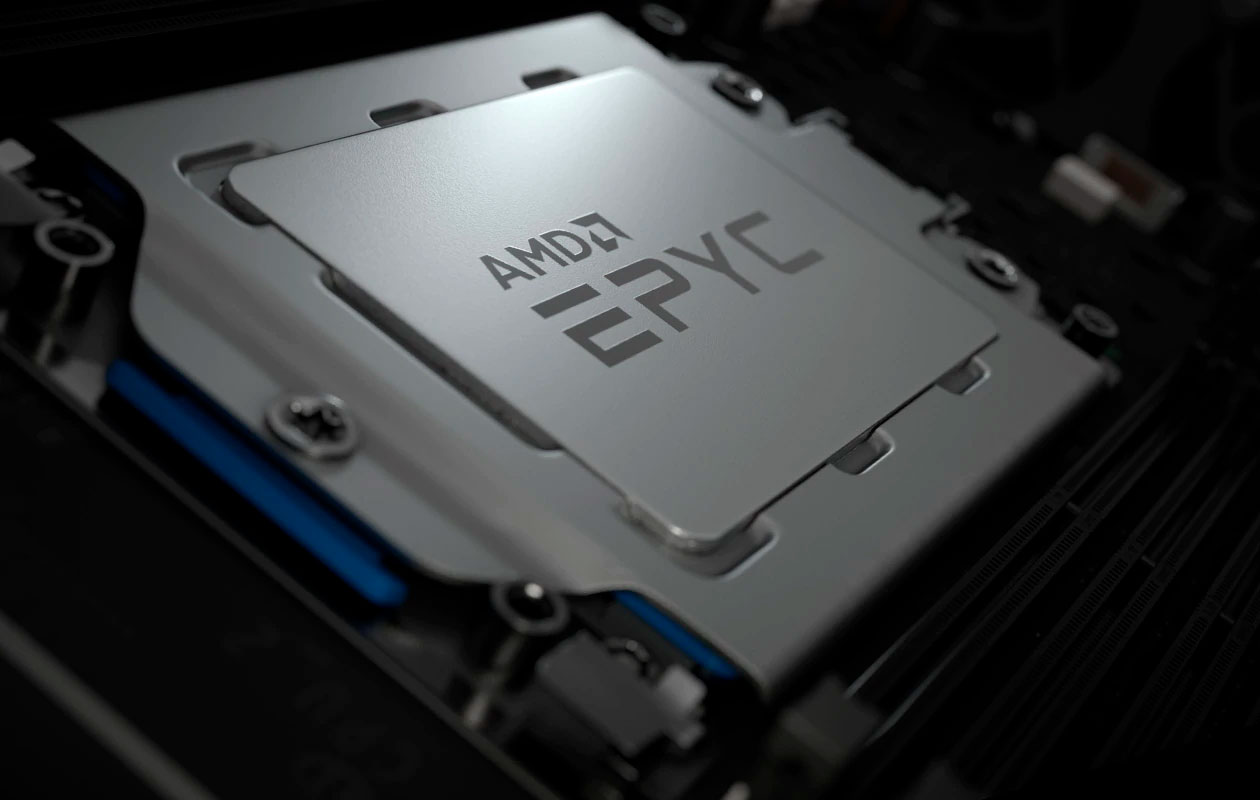AMD EPYC 7662 and EPYC 7532 7nm Processors Join Team Red's Rome Family

Product diversity is important, and AMD knows that. With the objective of offering its customers the best performance at the right price point, the chipmaker has expanded its EPYC 7002-series (codename Rome) product stack with two new models.
The EPYC 7662 and EPYC 7532 are made of the same ingredients as AMD's other EPYC Rome offerings. They leverage the company's own Zen 2 microarchitecture and TSMC's groundbreaking 7nm FinFET manufacturing process.
In the same vein as the other EPYC Rome chips, the EPYC 7662 and EPYC 7532 are residents of the Socket P3. Both come with support for up to eight channels of DDR4-3200 memory. They also offer 128 ultra-fast PCIe 4.0 lanes for exploiting the latest PCIe 4.0 SSDs and graphics cards that are on the market right now.
| EPYC Rome SKUs | Cores / Threads | Base / Boost (GHz) | L3 Cache (MB) | TDP (W) |
|---|---|---|---|---|
| 7H12 | 64 / 128 | 2.60 / 3.30 | 256 | 280 |
| 7742 | 64 / 128 | 2.25 / 3.40 | 256 | 225 |
| 7702 | 64 / 128 | 2.00 / 3.35 | 256 | 200 |
| 7702P | 64 / 128 | 2.00 / 3.35 | 256 | 200 |
| 7662 | 64 / 128 | 2.00 / 3.35 | 256 | 225 |
| 7542 | 32 / 64 | 2.90 / 3.40 | 128 | 225 |
| 7532 | 32 / 64 | 2.40 / 3.30 | 256 | 200 |
| 7502 | 32 / 64 | 2.50 / 3.35 | 128 | 180 |
| 7502P | 32 / 64 | 2.50 / 3.35 | 128 | 180 |
| 7452 | 32 / 64 | 2.35 / 3.35 | 128 | 155 |
The EPYC 7662 is the fifth 64-core, 128-thread part in AMD's arsenal. The company is positioning this part as the entry-level model. In addition to the generous core count, the EPYC 7662 also features 256MB of L3 cache. The 64-core chip flexes a 2 GHz base clock and 3.35 GHz maximum boost clock. AMD rates the EPYC 7662 with a 225W TDP (thermal design power).
The EPYC 7532 is the more unique addition of the two. Although the EPYC 7532 retains the 32-core, 64-thread configuration, the processor comes with a huge surprise under the hood.
AMD has unlocked the EPYC 7532 to carry up to 256MB of L3 cache, twice of that of the other 32-core EPYC chips. The added L3 cache should prove extremely useful in cache intensive workloads, such as ANSYS CFX. AMD goes on to gloat that the EPYC 7532 delivers up to 111% higher performance than Intel's Xeon Gold 6248, which is at a 12-core disadvantage.
In terms of specifications, the EPYC 7532 ticks with a 2.4 GHz base clock and 3.3 GHz maximum boost clock. The chip operates within the 200W limit.
Get Tom's Hardware's best news and in-depth reviews, straight to your inbox.
Big names, including Dell and Supermicro will be the first to offer the EPYC 7662 and EPYC 7532 with their products. AMD expects HPE and Lenovo to follow suit in the upcoming months.

Zhiye Liu is a news editor, memory reviewer, and SSD tester at Tom’s Hardware. Although he loves everything that’s hardware, he has a soft spot for CPUs, GPUs, and RAM.
-
escksu Replytommo1982 said:The EPYC 7702 and 7662 look exactly the same on paper, albeit the difference in TDP.
Well, thats the ugly side of server CPUs.
Power consumption is a big issue due to cooling and power cost, so is rack space. And then, server board power circuitry and cooling isn't as beefy as high end desktop boards (not meant for overclocking).
So, you need to pay more for lower power versions.... Then also more for faster variants. I know that you can overclock/undervolt etc easily for desktop CPUs, but server ones are more stringent in stability.